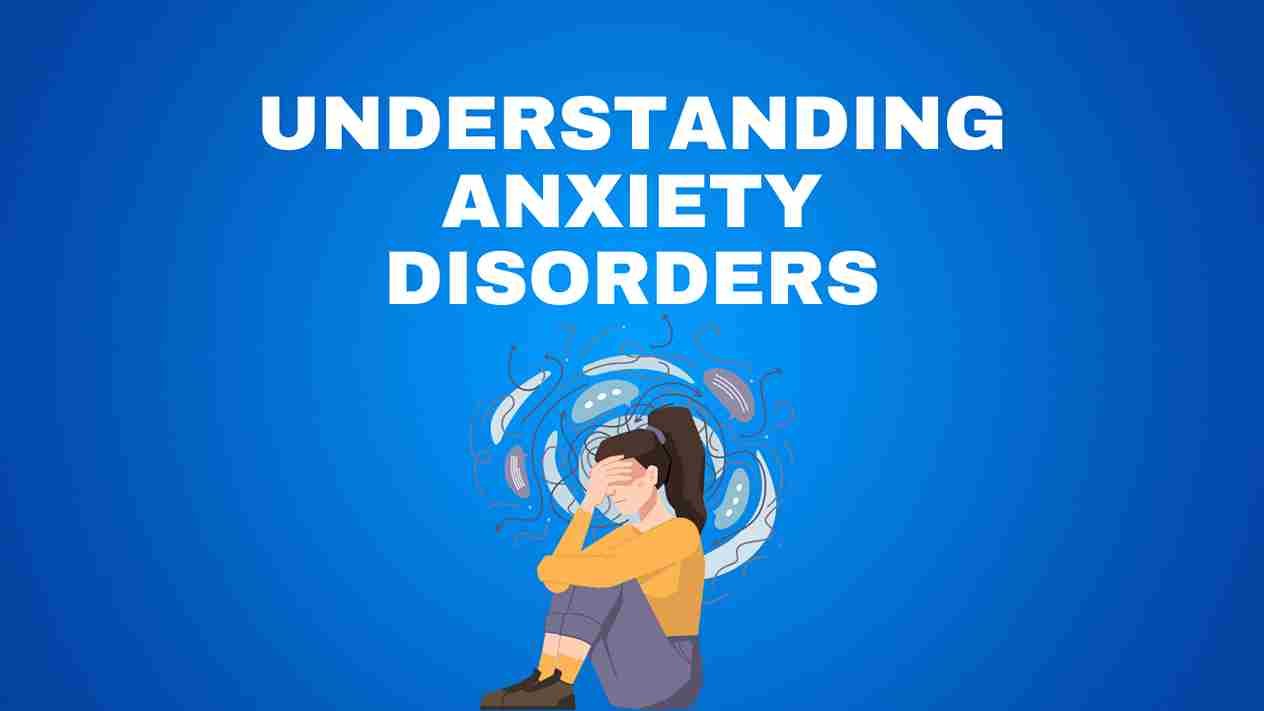Anxiety disorders have become increasingly prevalent in today’s fast-paced world, affecting millions of individuals worldwide. In this comprehensive guide, we will delve deep into the realm of anxiety disorders, shedding light on the various types, their distinctive symptoms, and the wide array of treatment options available. Our mission is not only to inform but also to help you gain a better understanding of anxiety disorders, empowering you to navigate this complex terrain with confidence.
What Are Anxiety Disorders?
Anxiety disorders are a group of mental health conditions characterized by excessive worry, fear, and unease. While it’s natural to experience occasional anxiety in response to life’s stressors, individuals with anxiety disorders find themselves trapped in a cycle of persistent and overwhelming anxiety, often with no clear trigger.
Types of Anxiety Disorders
- Generalized Anxiety Disorder (GAD):
- GAD is marked by excessive and uncontrollable worry about various aspects of life, such as health, work, and relationships. Individuals with GAD often experience physical symptoms like muscle tension, restlessness, and sleep disturbances.
- Social Anxiety Disorder (SAD):
- SAD is characterized by an intense fear of social situations and the scrutiny of others. Those with SAD may avoid social gatherings, leading to feelings of isolation and loneliness.
- Panic Disorder:
- Panic disorder involves sudden and recurrent panic attacks, which are intense episodes of fear accompanied by physical symptoms like heart palpitations, sweating, and trembling.
- Specific Phobias:
- Specific phobias are irrational and intense fears of particular objects or situations, such as spiders, heights, or flying.
- Obsessive-Compulsive Disorder (OCD):
- OCD leads to persistent and distressing obsessions and compulsions. Obsessions are intrusive and unwanted thoughts, while compulsions are repetitive behaviors performed to alleviate anxiety.
- Post-Traumatic Stress Disorder (PTSD):
- PTSD develops after exposure to a traumatic event. Symptoms may include flashbacks, nightmares, and hypervigilance.
Symptoms of Anxiety Disorders
The symptoms of anxiety disorders can vary widely depending on the specific type and the individual’s unique experiences. However, common symptoms include:
- Excessive worry and fear
- Restlessness or irritability
- Muscle tension
- Rapid heart rate
- Shortness of breath
- Nausea or stomach discomfort
- Difficulty concentrating
- Sleep disturbances
Treatment Options for Anxiety Disorders
Treating anxiety disorders is a complex process that requires a tailored approach. Here are some effective treatment options:
1. Therapy:
- Cognitive-Behavioral Therapy (CBT): CBT helps individuals identify and change negative thought patterns and behaviors contributing to their anxiety.
- Exposure Therapy: This approach involves gradual exposure to anxiety-inducing situations to reduce fear and avoidance.
2. Medications:
- Anti-Anxiety Medications: Benzodiazepines and certain antidepressants can help manage symptoms in the short term.
- Selective Serotonin Reuptake Inhibitors (SSRIs): SSRIs are often prescribed for long-term management of anxiety disorders.
3. Lifestyle Changes:
- Exercise: Regular physical activity can reduce anxiety and improve overall well-being.
- Diet: A balanced diet rich in nutrients can positively impact mental health.
- Stress Management: Techniques such as meditation and deep breathing can help alleviate anxiety.
4. Support Groups:
- Joining a support group can provide a sense of belonging and understanding, reducing feelings of isolation.
5. Self-Help Strategies:
- Mindfulness and relaxation techniques can be practiced independently to manage anxiety.
Seeking Help
If you or someone you know is struggling with anxiety disorders, it’s essential to seek professional help. A qualified mental health provider can assess the condition and recommend appropriate treatment options tailored to individual needs.
In conclusion, anxiety disorders are a complex but treatable category of mental health conditions. Understanding the various types, recognizing the symptoms, and exploring available treatment options are crucial steps toward managing anxiety effectively. Remember, seeking help is a sign of strength, and there is hope for a brighter, anxiety-free future.









